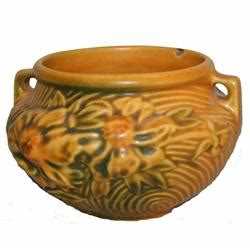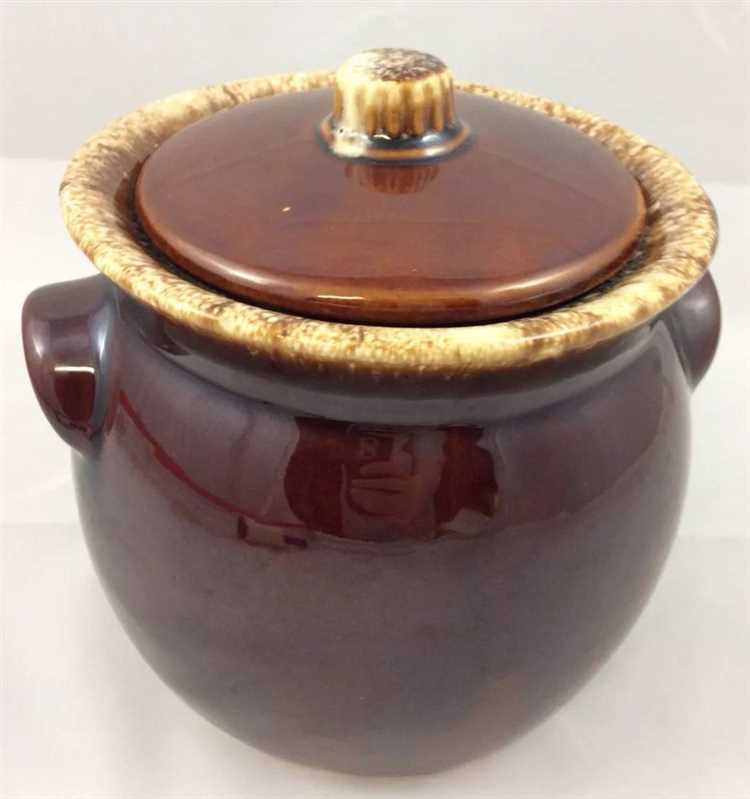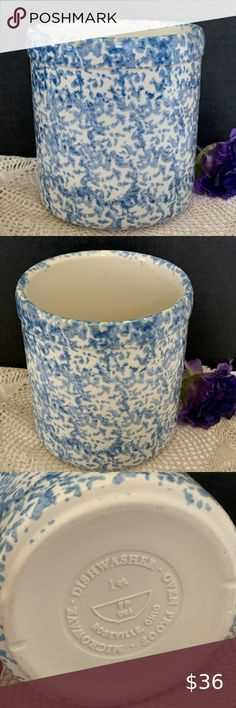When it comes to pottery, one of the biggest concerns is whether or not it is oven proof. This is especially true for collectors and enthusiasts of Roseville Pottery, a popular brand known for its high-quality and unique designs. Many people wonder if their Roseville Pottery pieces can safely be used in the oven, and if so, what precautions should be taken.
The answer to the question of whether Roseville Pottery is oven proof is not a simple yes or no. While some pieces may be safe to use in the oven, it is always best to err on the side of caution and assume that they are not. The reason for this is that Roseville Pottery was primarily made for decorative purposes rather than functional use.
However, if you are determined to use your Roseville Pottery in the oven, there are a few important factors to consider. The first is the age of the piece. Older Roseville Pottery pieces are more likely to be oven proof than newer ones. Additionally, you should carefully inspect the piece for any cracks, chips, or other damage that could compromise its structural integrity. If the piece is in good condition and you still want to use it in the oven, it is important to take the necessary precautions.
It is recommended to preheat the oven and gradually increase the temperature to avoid any sudden changes in temperature that could cause the pottery to crack. It is also advisable to use a baking dish or tray underneath the pottery to catch any potential drips or spills. Finally, it is important to note that even if your Roseville Pottery is oven proof, it may still be prone to staining or discoloration, so be sure to use caution and clean the piece properly after each use.
Understanding Roseville Pottery
Roseville Pottery is a highly collectible American art pottery produced from the late 19th century through the mid-20th century. It was manufactured by the Roseville Pottery Company, which was established in Roseville, Ohio in 1892. The company later moved to Zanesville, Ohio in 1898.
Roseville Pottery is known for its unique and innovative designs, quality craftsmanship, and vibrant glazes. The pottery pieces were created in various shapes and sizes, including vases, bowls, pitchers, and planters. The designs range from simple and utilitarian to intricate and decorative.
One of the distinguishing features of Roseville Pottery is the use of mold lines. These lines can be found on the inside or outside of the pottery pieces and are a result of the manufacturing process. Collectors often look for these mold lines as they can indicate the authenticity and age of the piece.
Another important aspect to consider when identifying Roseville Pottery is the signature or mark. Most Roseville Pottery pieces were marked with the Roseville stamp or label, which can be found on the bottom of the piece. The mark can provide valuable information about the specific line, pattern, and production year of the pottery.
Roseville Pottery is not only admired for its aesthetic beauty but also for its durability. While it is not specifically labeled as “oven proof,” many Roseville Pottery pieces were designed to be used as functional kitchenware. They were often used for serving, cooking, and baking purposes. However, it is important to note that not all Roseville Pottery pieces are suitable for oven use.
If you are planning to use your Roseville Pottery in the oven, it is recommended to consult with a professional or refer to the manufacturer’s guidelines. They can provide valuable information on the specific piece and its oven-safe capabilities.
Overall, Roseville Pottery is a cherished collector’s item that showcases the artistic and technical excellence of American potteries. Whether you are a collector or a pottery enthusiast, understanding the history, craftsmanship, and potential uses of Roseville Pottery can enhance your appreciation for these timeless pieces.
The History of Roseville Pottery
Roseville Pottery is a well-known and highly collectible brand of American art pottery that was produced from 1892 to 1954. It was based in Roseville, Ohio, hence the name.
The company was founded by J.F. Weaver, who purchased the Clark Stoneware Company and renamed it the Roseville Pottery Company in 1892. Initially, the company produced simple household items such as flower pots and stoneware. However, in the early 1900s, they shifted their focus to more artistic and decorative pottery.
Roseville Pottery quickly gained popularity for its innovative designs and high-quality craftsmanship. The company embraced the Arts and Crafts movement, which emphasized handcrafted and unique pieces. They employed talented designers such as Frederick Rhead, George Young, and Frank Ferrell, who created distinctive and aesthetically pleasing designs.
One of the most iconic lines of Roseville Pottery is the “Rozane” line, introduced in 1904. This line featured a unique glazing technique that gave the pottery a distinct iridescent sheen. Other popular lines include “Futura,” “Apple Blossom,” and “Sunflower,” each known for their distinctive patterns and colors.
During the Great Depression, Roseville Pottery faced financial difficulties like many other pottery companies. They adapted by introducing more affordable lines and experimenting with new techniques. Despite these challenges, the company managed to survive until 1954, when it was forced to close its doors due to changing consumer tastes.
Today, Roseville Pottery is highly sought after by collectors worldwide. Its unique designs, high-quality craftsmanship, and limited availability make it a valuable and prized addition to any pottery collection. The rich history and artistry of Roseville Pottery continue to captivate collectors and enthusiasts alike.
Characteristics of Roseville Pottery
Roseville Pottery is known for its unique and distinctive characteristics that set it apart from other pottery. Here are some key features of Roseville Pottery:
- Quality Craftsmanship: Roseville Pottery is renowned for its high-quality craftsmanship. Each piece is meticulously made by skilled artisans, ensuring attention to detail and durability.
- Artistic Design: Roseville Pottery is admired for its artistic design. The pieces often feature intricate hand-painted patterns, floral motifs, and textured finishes, making them visually appealing and decorative.
- Range of Shapes and Sizes: Roseville Pottery offers a wide range of shapes and sizes. From vases and bowls to pitchers and jardinieres, there is a variety of pottery options to suit different preferences and purposes.
- Distinctive Glazes: Roseville Pottery is known for its unique glazes that enhance the beauty of each piece. The pottery can be found in various glaze colors, including earth tones, pastels, and vibrant shades, adding versatility and charm.
- Emphasis on Functionality: While Roseville Pottery is admired for its artistic qualities, it is also designed to be functional. Many pieces are ovenproof, making them suitable for baking and cooking purposes, as well as serving and displaying.
Overall, Roseville Pottery is characterized by its exceptional craftsmanship, artistic design, range of shapes and sizes, distinctive glazes, and emphasis on functionality. These features contribute to the enduring popularity and collectability of Roseville Pottery among enthusiasts and collectors.
Determining Oven Proof Capability
When determining whether a piece of Roseville Pottery is oven proof, there are a few key factors to consider:
- Stamps or markings: Look for any stamps or markings on the bottom of the piece that indicate it is oven proof or safe for use in the oven. Some common markings to look out for include “Oven Proof,” “Oven Safe,” or a symbol of an oven. These markings are typically found on newer pieces of Roseville Pottery.
- Manufacturing date: The age of the piece can also provide some insights into its oven proof capabilities. Older pieces of Roseville Pottery, particularly those made before the 1930s, are less likely to be oven proof. This is because they were not designed or manufactured with the same standards as modern oven proof pottery.
- Glaze and finish: Examine the glaze and finish of the pottery. Oven proof pottery often has a smooth, glossy glaze that is less likely to absorb moisture or crack when exposed to heat. If the glaze has any cracks, chips, or rough spots, it may not be oven proof.
- Construction and thickness: Consider the construction and thickness of the pottery. Oven proof pottery is typically made with thicker walls and a sturdier construction to withstand the heat of the oven. If the piece feels thin or delicate, it may not be suitable for oven use.
It is important to note that even if a piece of Roseville Pottery is oven proof, it is still recommended to take precautions when using it in the oven. Preheating the pottery along with the oven and avoiding sudden temperature changes can help prevent any potential damage.
If there is any uncertainty about the oven proof capabilities of a specific piece of Roseville Pottery, it is best to err on the side of caution and avoid using it in the oven.
Caring for Roseville Pottery
If you own Roseville Pottery, it’s important to take proper care of it to ensure its longevity and beauty. Here are some tips to help you care for your Roseville Pottery:
- Handling: When handling your Roseville Pottery, make sure to use clean hands and handle it with care. Avoid holding it by the fragile handles or rims, as this can cause damage.
- Cleaning: It’s essential to clean your Roseville Pottery regularly to prevent dirt and grime buildup. Use a mild soap and water solution to gently wash the pottery. Avoid using abrasive cleaners or scrub brushes, as these can scratch the surface. Rinse thoroughly and pat dry with a soft cloth.
- Display: When displaying your Roseville Pottery, avoid placing it in direct sunlight or near sources of heat, as this can cause fading or damage. Also, ensure that it is displayed on a stable and secure surface to prevent accidents.
- Storage: If you need to store your Roseville Pottery, make sure to use acid-free tissue paper or bubble wrap to wrap each piece individually. Store them in a cool, dry place away from temperature fluctuations and excessive humidity.
- Avoid contact with harsh chemicals: Keep your Roseville Pottery away from harsh chemicals, such as bleach or strong solvents, as these can cause damage to the pottery’s glaze or finish.
- Maintenance: Regularly inspect your Roseville Pottery for any signs of damage or wear. If you notice any chips, cracks, or other issues, it’s best to consult a professional for repair or restoration.
- Use coasters and trivets: When using your Roseville Pottery as serving dishes or drinkware, always use coasters and trivets to protect the surface from heat and moisture.
By following these care tips, you can ensure that your Roseville Pottery remains in excellent condition and retains its value for years to come.
How to Use Roseville Pottery in the Oven
Roseville Pottery is not oven-proof, which means it should not be used in the oven. This pottery is primarily intended for decorative purposes, and subjecting it to high heat can cause it to crack or even shatter.
However, if you still wish to use your Roseville Pottery for serving purposes, you can follow these precautions:
- Preheat the oven according to your recipe’s instructions.
- Place your Roseville Pottery on a trivet or a dishcloth to protect it from direct contact with the hot oven rack.
- Avoid sudden temperature changes by letting your Roseville Pottery slowly adapt to the oven’s heat. To do this, you can place it in the oven while it is preheating.
- Use your Roseville Pottery to serve hot dishes only briefly. Remember that it is not designed to retain heat like other oven-safe cookware.
- When removing your Roseville Pottery from the oven, use oven gloves or towels to protect yourself from burns.
Despite taking these precautions, it is important to note that using Roseville Pottery in the oven is not recommended and may still pose a risk to the pottery and potentially to your safety.
If you are unsure about the specific properties of your Roseville Pottery piece, it is always best to consult the manufacturer or a pottery expert for guidance.
FAQ:
Is Roseville Pottery safe to use in the oven?
Yes, Roseville Pottery is oven proof and can be safely used in the oven. Just make sure to follow the recommended temperature guidelines provided by the manufacturer to prevent any damage to the pottery.
What temperatures can Roseville Pottery withstand in the oven?
Roseville Pottery can generally withstand temperatures up to 450 degrees Fahrenheit in the oven. However, it is always recommended to refer to the specific instructions provided by the manufacturer to ensure the safe use of the pottery.
What precautions should I take when using Roseville Pottery in the oven?
When using Roseville Pottery in the oven, it is important to preheat the oven to the desired temperature before placing the pottery inside. Additionally, avoid subjecting the pottery to sudden temperature changes, such as transferring it from a hot oven to a cold surface, as this may cause it to crack or break.
Can I use Roseville Pottery directly on the stove?
No, Roseville Pottery is not designed to be used directly on the stove. It is recommended to use the pottery in the oven or for serving purposes only. Using it on the stove can result in damage to the pottery and may pose a safety risk.



Sungguh menggugah! Seperti otakku naik roller coaster wawasan. 🎢🧠 #IndosneioSensasiWawasan
Keren! Seperti angin sepoi-sepoi membersihkan tanah kebijaksanaan. 💨🧠 #IndosneioAnginKebijaksanaan